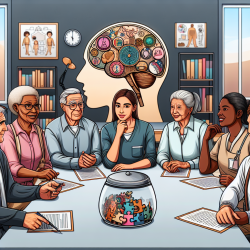Unlocking the Power of Naturalistic Developmental Behavioral Interventions (NDBIs)
As practitioners dedicated to enhancing the lives of children with autism, it's essential to stay informed about the latest research and therapeutic approaches. A recent commentary published in the Journal of Autism and Developmental Disorders titled Neurodiversity and Autism Intervention: Reconciling Perspectives Through a Naturalistic Developmental Behavioral Intervention Framework provides valuable insights into how NDBIs can bridge the gap between traditional autism interventions and the neurodiversity movement.
What Are NDBIs?
Naturalistic Developmental Behavioral Interventions (NDBIs) are a set of therapeutic approaches designed to be more naturalistic, person-centered, and aligned with the principles of neurodiversity. Unlike traditional Applied Behavior Analysis (ABA), NDBIs focus on leveraging a child's interests and motivations to teach functional skills in a natural environment.
Key Components of NDBIs
- Natural Settings: Implemented in everyday environments rather than clinical settings.
- Shared Control: Encourages child-initiated activities and shared decision-making between the child and the therapist.
- Natural Reinforcement: Uses natural consequences as reinforcement rather than artificial rewards.
- Individualized Goals: Tailors intervention goals to each child's unique strengths and needs.
Why NDBIs Align with Neurodiversity
The neurodiversity movement emphasizes the acceptance and celebration of neurological differences, including autism. NDBIs align with this perspective by focusing on:
- Strength-Based Approach: Utilizing a child's existing interests to enhance engagement and skill acquisition.
- Co-Construction: Ensuring that therapy goals are collaboratively developed with input from the child and their family.
- Naturalistic Skill Building: Teaching skills in a way that is meaningful and enjoyable for the child.
Practical Recommendations for Practitioners
To improve the alignment of your practice with the principles of NDBIs and neurodiversity, consider the following recommendations:
- Center Autistic Voices: Involve autistic individuals in the development and evaluation of intervention goals.
- Assess Social Validity: Regularly evaluate the acceptability and effectiveness of interventions from the perspective of autistic clients and their families.
- Use Participatory Research: Engage autistic co-researchers and consultants in the design and implementation of clinical trials and programs.
- Disclose Conflicts of Interest: Ensure transparency in reporting any potential conflicts of interest in research and practice.
Conclusion
Naturalistic Developmental Behavioral Interventions offer a promising framework for creating more respectful, effective, and enjoyable therapeutic experiences for autistic children. By integrating the principles of neurodiversity, practitioners can develop interventions that not only improve functional skills but also enhance the overall quality of life for their clients.
To read the original research paper, please follow this link: Neurodiversity and Autism Intervention: Reconciling Perspectives Through a Naturalistic Developmental Behavioral Intervention Framework.










